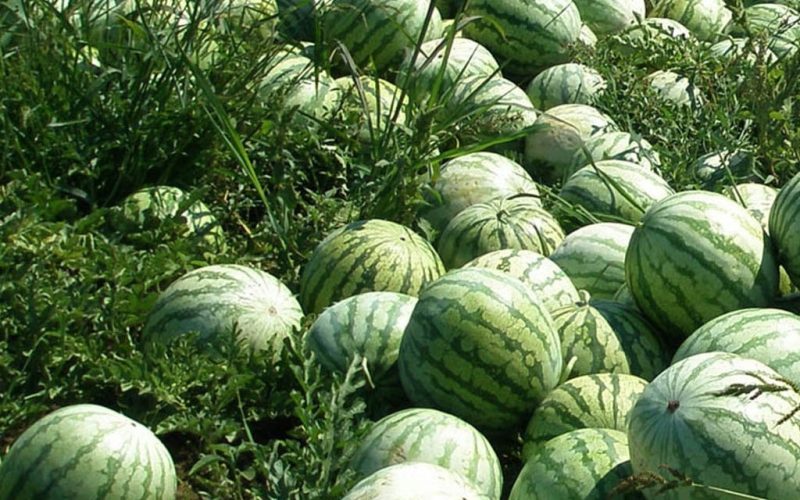Watermelons are healthy fruits, and they are often called summer melons, along with muskmelons and cantaloupes.
These big, delicious fruits are not difficult to grow. Here are tips to help you grow your watermelon farm.
How to Prepare Your Land for Watermelon Farm?
Watermelons are just like any other vegetable vine or plant, growing out and taking up as much room as you can give them.
They can even go beyond their limits, like pumpkins, looping around walls and sometimes wrapping around other plants before bringing them down to the ground.
Pick an area far from the rest of your garden to ensure your melons have plenty of space to expand (and to protect them from upsetting other plants).
This is particularly important the first year you grow because you will be genuinely experimenting with the possibilities for how big they will be!
Watermelons prefer sandy soil, and you’re a perfect candidate for melon growing in a sandy loam region.
How to Choose the Cultivar?
The Baby Sugar, Moon and Stars, and Jubilee are all popular with farmers who plant in their backyards. Every growing tip can allow everyone to succeed and prosper in growing watermelon, no matter how varied.
What Are the Differences Between These Watermelons?
There are four common variations:
Seedless
Seedless versions are available, closely resembling picnic and icebox melon varieties. While the seeds you will find are not really without seeds, they are light in color, very small, and can be consumed if you want to.
They are infertile, too.
Orange and Yellow Melons
These are less available in supermarkets, so you should grow your own. They come in various shapes and sizes, but when they go around, you will most likely harvest them.
The inside is not pink; it is orange or yellow. Flavor types vary and are compared with other fruits, including mangoes and cantaloupe.
The Ice Box
This is one of the two types often bought at the grocery store. They are usually round and can accommodate one or two individuals.
They’re a little more expensive per pound, but they can hold in the fridge well and make a perfect snack.
Picnic
Most people think this when they hear the word “watermelon.” They’re oblong and thick, and they can feed a group. This can be found in several colors, but the rinds are often green when ripened.
When growing the first melon, the important thing to note is that many of the fancy types in seed catalogs may not be as pest-resistant as you think.
If you want to guarantee a successful first-year harvest, consider a proven seed type. You can probably find these types in your local store, and online retailers sell a few other special and proven varieties.
Common options include:
Moon and Stars
This has a rind that shows the moon and bright star-shaped spots. The inside is a delicious fruit that will be able to be sustained long after harvest.
Jubilee
One of the most common melons for picnics is this long watermelon, which has typical striped skin. Inside is one of the brightest reds.
Sugar Baby
This variety is a flourishing big producer in smaller gardens. It’s round, small, and sweet. Thanks to its durable rind that can withstand cracking and blight.
Seedlings in 4.5-inch pots are available from stores and online; it is a favorite among beginners and experienced gardeners.
How to Plant Watermelon?
From planting to maturity, 70 to 90 days are required, so be sure you have that many times to let your melons grow. If you live in a cooler climate, you’ll be better off starting your seeds indoors.
If you are directly sowing or continuing with seedlings, providing a hill or mound is the best way to ensure plenty of room for your watermelons.
One plant per hill works well, so make sure the hills are at least five feet apart. For a particular watermelon you are planting, you may also refer to the product instructions. Sometimes, those varieties need a little more space.
Another way of having the best return from direct sowing is by planting two seeds on each hill. Drop the extra after they have sprouted and either grow it in its hill or dispose of it.
At least you are sure to pick the best of the two, which is okay to grow in cooler climates where the soil has only reached temp before planting.
How to Water Your Watermelon?
- Give your watermelons 1 to 2 inches of water per week (this means 1 inch equals 16 gallons a week)
- Maintain the soil moist until the fruit reaches its maximum size, and then avoid watering as the fruit ripens.
- Keep the soil reasonably moist during the flowering and development of fruits. Cut back on the water a week or two before harvest; dry soil may help plants absorb sugars in the watermelon.
- When the leaves are wilted in the morning, the plants require water. By the end of the day, wilting leaves aren’t unusual.
Watermelons Feeding
Your watermelon farm looks pretty lush; how do you feed your plants?
- Watermelons can be dressed side by side with an even organic fertilizer such as 10-10-10 early in the season. However, once flowers and fruits grow, decrease nitrogen and increase phosphorus and potassium, using a 5-10-10 fertilizer.
- Prepare planting beds or a commercial organic combination of aged compost and manure. Before planting, apply some inches of aged manure to the planting beds during autumn.
- Some Of the Plants For watermelons companion, grow radish, beans, corn, and nasturtium with watermelons.
How to Harvest Watermelon?
Now, your watermelon farm is ready for harvest; as a rule, it is ripe whether the plant is dying, browning, or totally removed from the melon.
Moreover, even if it’s not ripe, it’s better to pick it up from the ground and take it inside at that stage.
Melons don’t keep ripening off the vine. Signs that watermelon is ready to pick include:
A bottom, cream, or yellow (not white) color streak
Flesh that gives a small bit when pressed with your fingernail
A thumping as you tapped gently.
Get your cutting knife to cut the watermelon from the vine and make sure you cut it as close to the fruit as possible. You may still have other melons that continue to ripen on the same vine, so be careful.
How to Store Watermelon?
If not cut or sliced, the watermelons may stay in the refrigerator for up to a week, but sweetness and taste can diminish.
A cut watermelon holds for about four days in the refrigerator. To avoid cold burn or dehydration seals the watermelon securely in plastic.
Watermelons can be store without refrigeration but in a cool, relatively moist position for 2 to 3 weeks.
And that is how to plant and harvest watermelons; go and enjoy your very own juicy watermelon from your watermelon farm.








